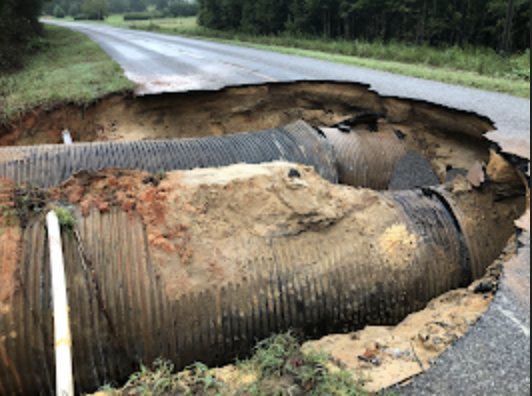History, tradition surround St. Elizabeth’s
Published 12:00 am Friday, December 10, 1999
St. Elizabeth Catholic Church was constructed at the beginning of the century. It took two years to build at a cost of about $10,000, a fortune at the time. When they first opened the doors there was about 15 members of the church, today the congregation is made up of 80 families.
Photo by Robert Blankenship
The Catholic Church has a very long and storied history throughout the world and at the beginning of this century the city of Greenville became a part of that tradition with the building of the St. Elizabeth Catholic Church.
The seed to build the church was planted in 1900 when J.B. Southerland, of Troy, New York lost his wife, Elizabeth. Though he was not a Catholic (but later converted), his wife was described as an "ideal Catholic of strong character and personality". Southerland wanted to dedicate something in the memory of his beloved wife and he took the advice of the parish priest to erect a church in a remote area of the south.
Before the church was built, the small group of Greenville Catholics would hold their meetings in homes. But, in 1901, Bishop Edward P. Allen, Bishop of Mobile who was head of several counties including Butler, purchased a city block of land, one block from the Butler County Courthouse. With his property and funds from Southerland, the Catholic congregation of Greenville would soon move into their own church.
In 1902, the cornerstone of Saint Elizabeth's, named after the mother of John the Baptist, was laid and dedicated by Bishop Allen. Father Debeurne, a Jesuit priest serving this area at the time, supervised the construction. The sand to make the mortar was hauled twelve miles by mule and wagon from Cedar Creek. The floor was laid using virgin pine of gold and white which was cut and shipped from Florala. A well was dug just to the west side of the church to supply needed water, much of which was used for making the mortar.
The church was completed in 1904. The walls measured 14 inches thick and the church was lighted by carbide gas. Dazzling, stained-glass windows where hand-made and shipped from Munich, Germany. The total cost of the church was about $10,000, a fortune at the turn of the century. But today, the windows of the church hold a higher value.
As the century progressed so did the church. The carbide lighting system soon gave way to a coal system and then finally, electricity. The brick walls were covered with a stucco-like surfacing known as
pebble-toss and in the 1940's pews were added.
Prior to 1972, the church would have a priest visit about twice a year, first from Selma and later from Montgomery. When St. Martin Church in Troy was established, St. Elizabeth became a mission of that parish. St. Elizabeth now serves all of Butler and Conecuh Counties as well as southern Lowndes County.
In 1972 the church received its first resident pastor, Rev. Robert Fulton (who has returned for his second tenure as the pastor). During his first tenure, a rectory and a parish hall were constructed with the help of the Catholic Church Extension Society and the family of the late John J. Sullivan.
It also was at this time that a major restoration took place. Fulton and members of the parish took on the work themselves, which included rewiring, reappointing the walls, painting and sanding the hardwood floors. They also did much-needed repairs to the stained-glass windows. They took each piece out and replaced the broken glass and refitted them into the window.
With much of the interior being remodeled, it was not until 1990 that a major restoration took place on the exterior. At that time woodwork around the tower that had become old and rotted was replaced with a vinyl material and the entire exterior was painted.
St. Elizabeth's has continued to grow over the past 95 years. The church began with about 15 members and is now the religious focal point for about 80 families from Greenville and surrounding communities.


